If you sleep on your back, you’re probably looking for more support and a little less give. You want to feel like you’re on the mattress, not in it. Additionally, if you’re sleeping on your back, you’ll need to ensure your neck is getting ample support, which is where a good pillow comes in. You should think about choosing a medium or medium-firm mattress that can also provide support to your hips, neck, and spine. Is there such a thing? Sure there is!
Editors’ Choice – Amerisleep AS2
Our pick for the overall best mattress for back sleepers is the Amerisleep AS2, which is their most popular mattress for back and stomach sleepers. It has a medium-firm feel, which is perfect for those who need extra support and alignment. The Bio-Core™ foam support layer resists sagging, so it’s made to last. It also comes with a 100-night sleep trial, free shipping, and free returns. Right now, Amerisleep is offering $200 off any mattress with a promo code.
Buy NowResearch and Resources
In writing this article, we:
- Researched 10-12 leading brands
- Referenced dozens of website reviews for the most comprehensive perspective
- Spent 16 hours writing, researching, and revising to deliver the most value-driven, accurate content possible
Best Mattresses for Back Sleepers
| Mattress | Features | Firmness | Price for a Queen |
|---|---|---|---|
| Editors' Choice: Amerisleep AS2 |
| Medium-firm | $1,099 |
| Casper Wave |
| Medium | $2,295 |
| WinkBeds Plus |
| Very-firm | $1,599 |
| Purple |
| Medium-firm | $999 |
| Tuft & Needle |
| Medium-firm | $595 |
| Leesa |
| Medium-firm | $995 |
| Loom & Leaf |
| Medium to Firm | $1,499 |
| Brentwood Cedar |
| Medium | $2,899 |
Our Criteria
We tried to choose mattresses that would fit in a wide range of budgets and lifestyles.
In general, back sleepers should keep their eyes peeled for a mattress that meets these criteria:
- A mattress that alleviates pressure points while also offering a firm support system
- A mattress that isn’t too soft, since you’re in a position that needs consistent alignment
- A mattress that won’t sag or dip after normal use
- A mattress that won’t dig into the back, causing more pain upon waking
No matter the mattress you choose, be sure to take into account your specific needs, the company’s return policies and sleep trial periods, and read reviews. Remember: just because it was perfect for one person doesn’t mean it will work for you. Your mileage may vary.
1. Amerisleep AS2
The Amerisleep AS2 is rated as medium-firm on their website and marketed as the #1 choice for back and stomach sleepers. We’re guessing that’s because of the mattresses’ construction, which breaks down like this:
- Top layer: 2 inches of Bio-Pur memory foam with an advanced open-cell structure (ensures you sleep cool, which is a plus for memory foam!)
- Middle layer: 3 inches of polyurethane foam with Surface Modification Technology, or SMT. This acts as a transition foam to relieve pressure on your shoulders and lower back.
- Bottom layer: 7 inches of high-density foam with an ILD rating of 35 (a 40-44 is considered extra firm). On Amerisleep’s website, they claim this layer will resist sagging over time.
You won’t sink into this mattress, so if you’re a back sleeper it’s perfect for keeping all those pressure points aligned and supported. It’s also built to isolate motion so you don’t feel your sleep partner rolling around all night. This mattress isn’t very bouncy and it’s definitely firmer than the average memory foam, so you might want to look for something else if you’re a side sleeper or combo sleeper. However, it’s the perfect fit for back sleepers who need added support and firmness.
2. Casper Wave
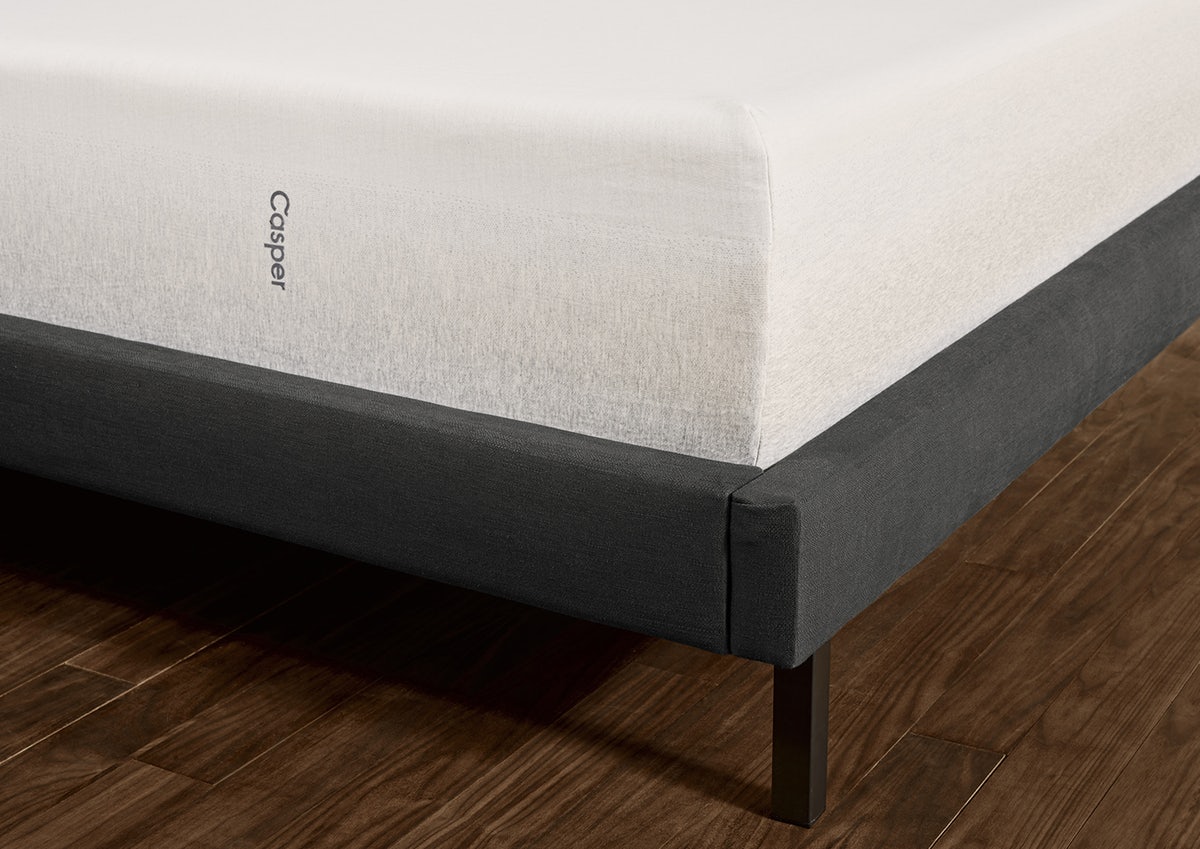
If you’re an athlete, your first priority in a mattress is probably one that helps your muscles recover quickly while also preventing additional pain or pressure buildup. You might also be looking for a mattress that doesn’t sleep hot since that can delay your muscle recovery. While some mattress companies tout cooling technologies in their mattresses, not all of these are proven to actually do anything. Look for studies or tests the company conducted to determine the efficacy of the cooling tech. Athletes may also need a mattress with varying firmness levels–either a flippable mattress or something specifically made for combo sleepers. This is simply due to fluctuating muscle tension–a firm mattress might feel nice after a long run, but you’ll want something a bit softer after weightlifting or strength training.
Athletes typically have more muscle mass than the Average Joe, so they are more likely to sink down into the mattress. If this describes you, look for a mattress that supports your hips and back so you’re not waking up in pain.
Our choice for athletic back-sleepers is the Casper Wave.
| Features | May not work for… |
|
|
3. WinkBeds Plus
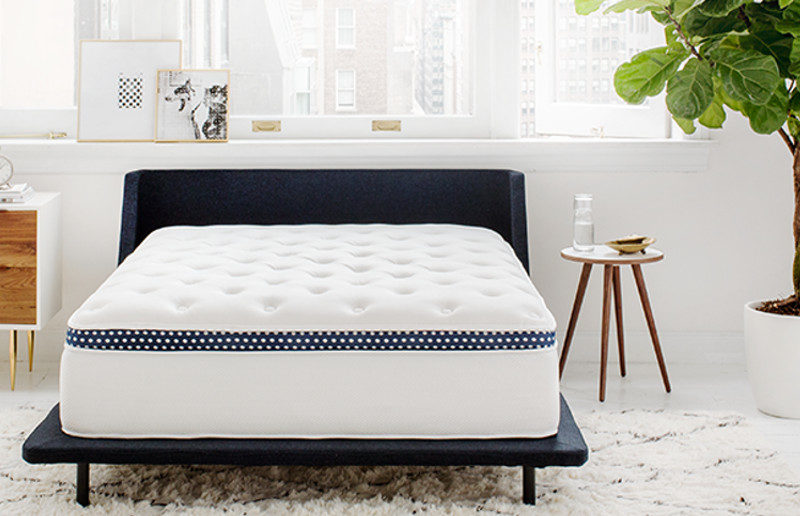
If you sleep on the heavy side and you’re a back sleeper, finding the right mattress may take a little bit of extra time. We recommend you look for a medium-firm or firm mattress with adequate height, so you don’t feel like the mattress will bottom out or dig into your back. A mattress that’s at least 12” tall is a good benchmark. You’ll also want to look at the mattress’ construction, ensuring its materials hold up over time. If your BMI is between 26-31, you’ll be more likely to enjoy sleeping on a firmer mattress (one rated between 6-8 on the firmness scale).
Our choice for heavy back sleepers is the WinkBeds Plus, their model specifically engineered for heavier folks.
| Features | May not work for… |
|
|
4. Purple Mattress
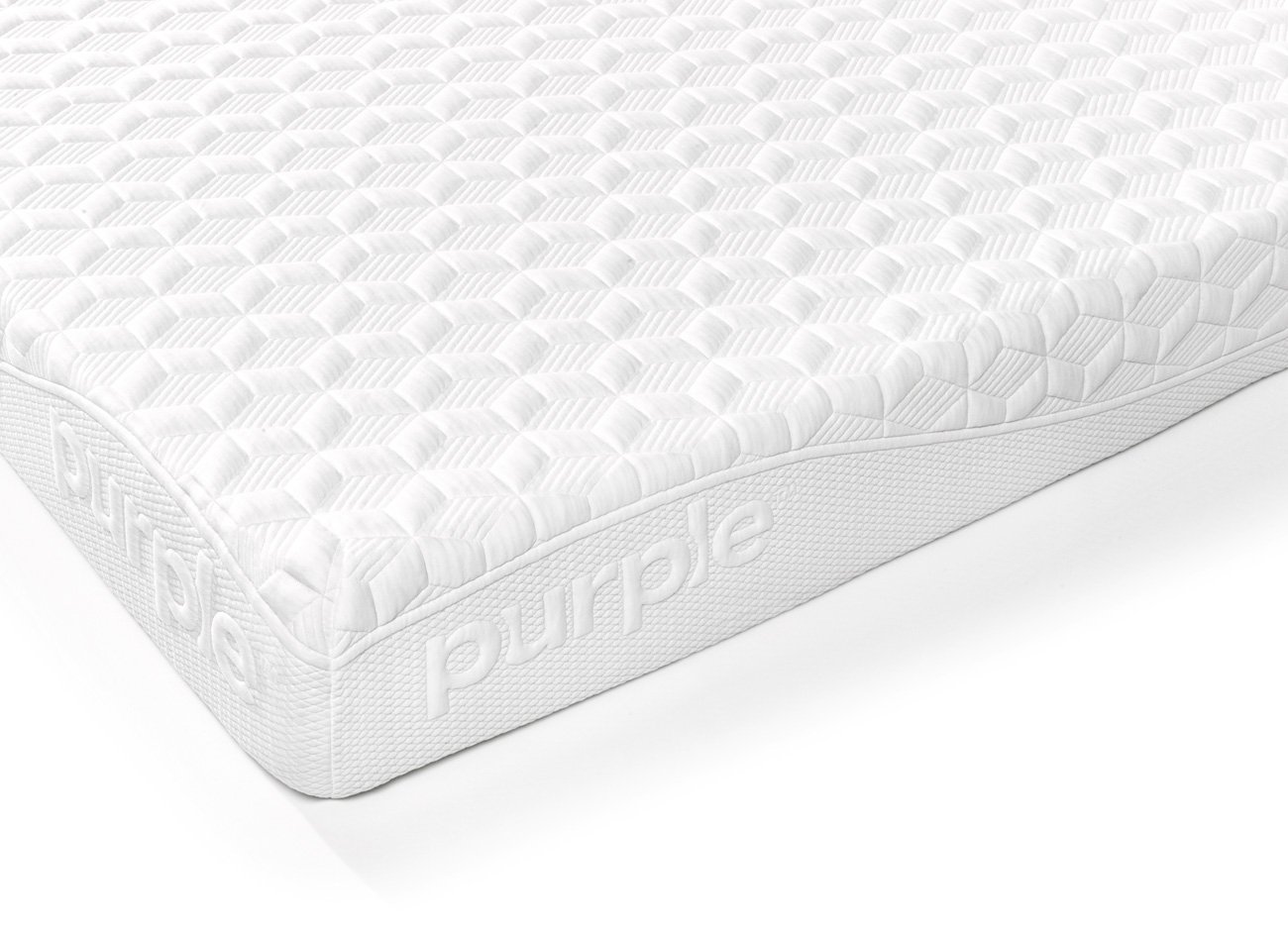
If you’re pretty petite, you won’t put as much pressure on your mattress, so a firm mattress or even a thicker mattress probably isn’t necessary. However, back sleepers are told to try a firmer mattress for proper back support. So what do you do? What type of mattress is best?
The Purple Mattress is engineered a bit differently than other typical “foam” mattresses on the market today. Its Smart Comfort Grid™ adapts to your body shape to relieve pressure on your joints! The grid design also keeps it cool. The feel of the mattress is quite unique, so if you can, try it out in one of their nearby stores.
| FEATURES | MAY NOT WORK FOR… |
|
|
5. Tuft & Needle

While it’s true that some mattresses cost more than others simply because of the materials they’re made from, you can still find a nice mattress for a decent price (of course, a “decent price” will always depend on your individual budget). Knowing the average cost for certain types of mattresses will help in your quest to find the one. Since back sleepers are typically looking for a firmer mattress, finding a “cheaper” one can actually work in their favor since most companies price their plusher mattresses a bit higher (because they use more material to make them).
A good value mattress should hold up over time–durability comes down to the mattress’ construction, materials, warranty, and how you use it. Considering all this, we chose a mattress with at least 5,000 customer reviews which gave us a full picture of the mattress’ quality and durability.
Our choice for Best Value Mattress is the Tuft & Needle Mattress.
| FEATURES | MAY NOT WORK FOR… |
|
|
6. Leesa
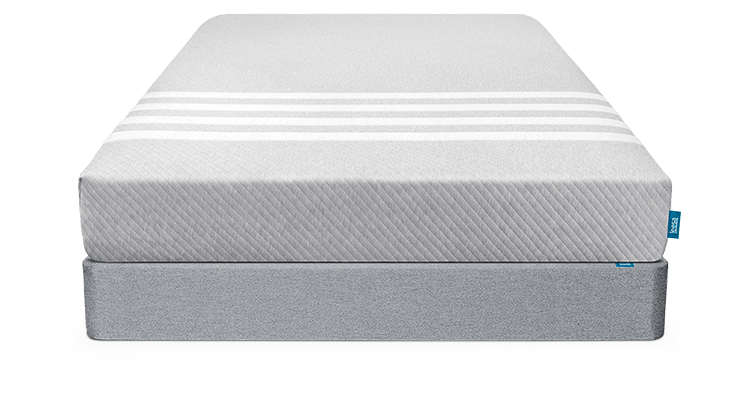
If you experience pain in your lower back, shoulders, or hips, you probably struggle to get a good night’s sleep, too. A mattress that doesn’t aggravate your already sensitive pressure points is the way to go. At Healthy Sleep, we believe you shouldn’t have to modify an existing mattress just to get a pain-free night of sleep. In some online forums, frustrated commenters recommended buying four or five foam toppers from Wal-Mart and placing them atop a mediocre mattress, just so they could sleep with less pain. While this is seemingly cost-effective, buying a nice mattress that actually helps with your back pain and lasts for 7-10 years would actually save you money. Additionally, it would probably relieve your chronic pain more than rigging a princess and the pea situation in your bedroom.
Our recommendation for pain sufferers is the Leesa mattress.
| FEATURES | MAY NOT WORK FOR… |
|
|
7. Loom & Leaf
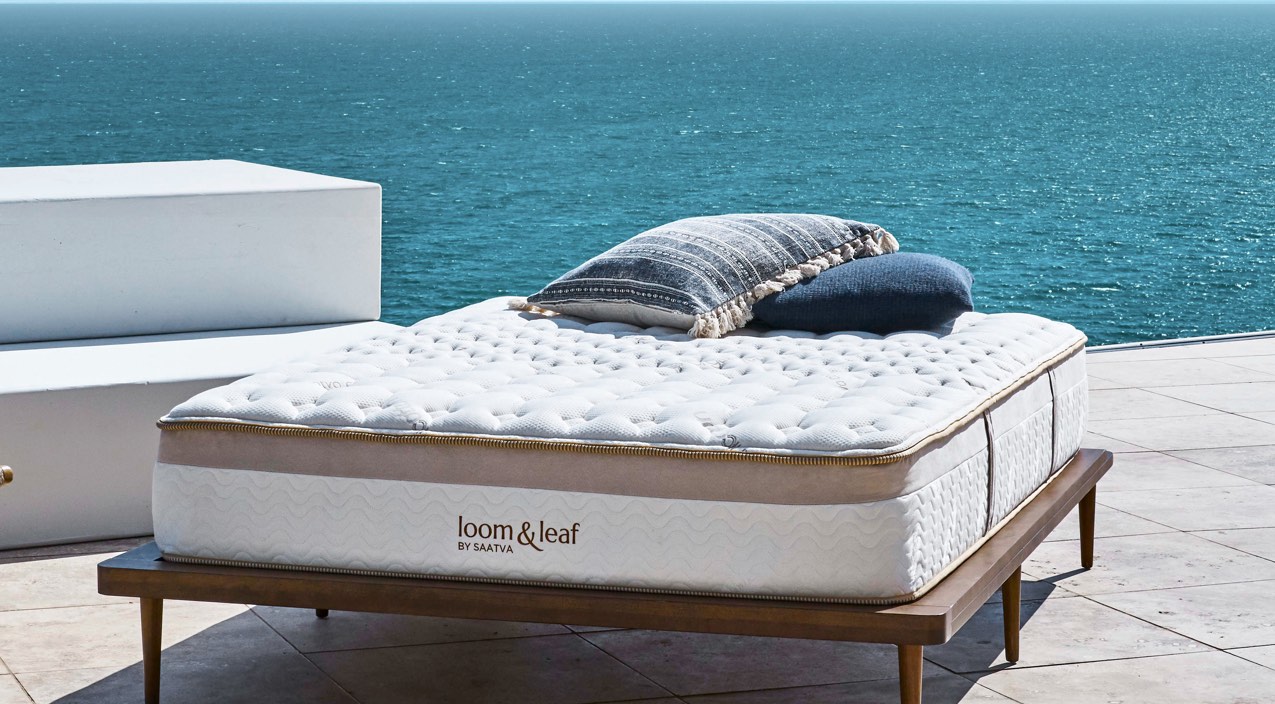
What exactly does luxury mean in the world of mattresses? Well, it depends on the brand’s reputation, the quality of the mattress materials, and so on. A very basic definition constitutes that “luxury” just means “more comfortable than the average mattress.” While technically true, we also believe a luxury mattress should be worth whatever extra money you pay for it. That means it should last a long time, and it definitely shouldn’t cause any pain or sleep issues to get worse.
If you’re in the market for a luxury mattress, make sure the mattress features are more than a marketing tactic. Back sleepers willing to spring for a luxury mattress may also be suffering from chronic pain, so their mattress should go the extra mile. Look for a medium-firm mattress or even a company that offers different firmness levels.
Our recommendation in this category is Loom & Leaf mattress. They don’t cater to the “bed in a box” trend, claiming that mattresses rolled up in a box are probably not the highest quality. They offer free white glove delivery and setup with purchase.
| FEATURES | MAY NOT WORK FOR… |
|
|
8. Brentwood Cedar

A hybrid mattress sounds trendy, but they can be especially useful when you’re a back sleeper. Hybrids offer the benefits of memory foam or latex and innerspring without the downsides. Most of the complaints surrounding memory foam say that it sleeps too hot, it breaks down quicker than innerspring, and it doesn’t provide a lot of bounce. Innerspring coils are typically thought of as too squeaky and uncomfortable since older mattresses were made with Bonnell coils, which dig into the back. Of course, innerspring mattresses have come a long way since then, and now most companies that sell them offer innovative models, many with individually wrapped coils for motion isolation and comfort. Enter the hybrid, which combines the comfortable layers of foam with the balance and support of innerspring.
Thanks to the coils, these mattress types are also bouncier. This means you shouldn’t feel like you’re sinking into the mattress, which is crucial for back sleepers who need to keep their hips and pelvis aligned.
Our choice for Best Hybrid is the Brentwood Cedar mattress.
| FEATURES | MAY NOT WORK FOR… |
|
|
9. Saatva
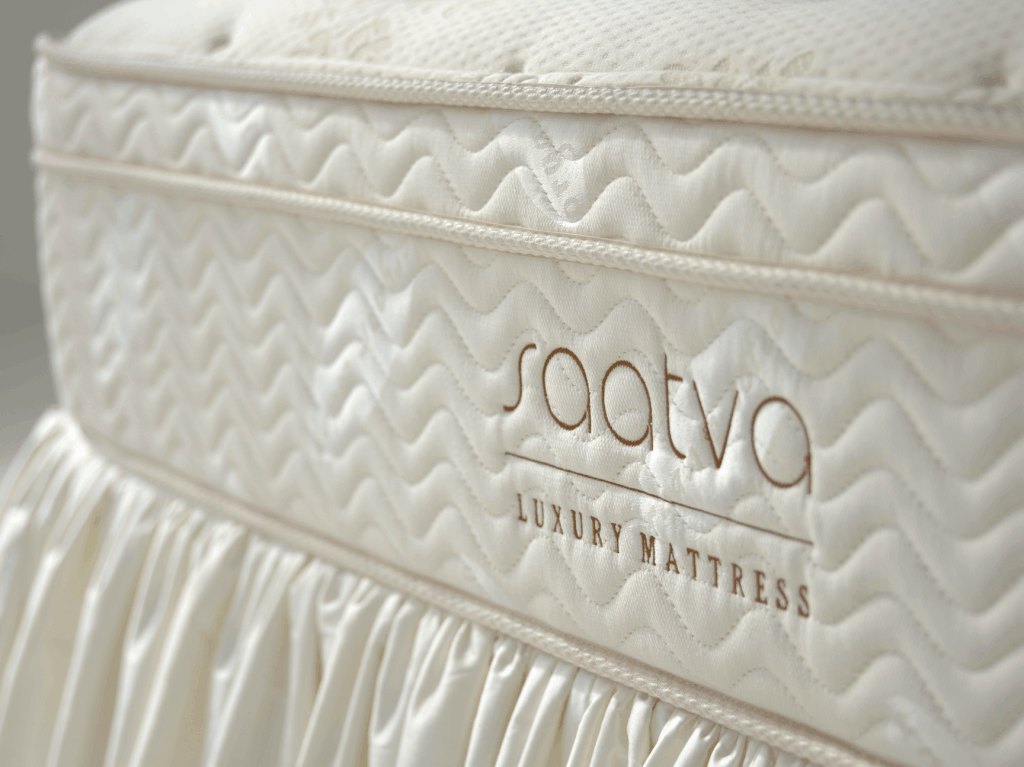
The Saatva brand has been around for a while, and while it’s not your typical “bed in a box” company, the customer reviews speak to its quality and luxury feel. The Saatva mattress has a luxury Euro pillow top with their exclusive Guardin® botanical antimicrobial fabric treatment, keeping it clean and bacteria-free. The edge of the mattress is bolstered by the Dual Perimeter edge support system, a foam encasement that deters sag and adds even more durability to the mattress.
416 individually wrapped coils contour to your body and minimize motion transfer, so you won’t feel your partner moving or getting out of bed in the night. Because of the coils, the mattress won’t trap heat. Underneath the coils are two back support enhancements for pressure relief, reducing back pain and tension. Finally, the bottom support layer is made with 884 tempered steel coils, reducing the risk of sagging.
| FEATURES | MAY NOT WORK FOR… |
|
|
Back Sleeping 101
Ever heard the phrase “Who woke up on the wrong side of the bed this morning?” Perhaps it was directed at you when you were having an especially bad day. Well, maybe picking a mattress suited to your needs can help with that! Chris Idizkowski, Ph.D. and a director of the Sleep Assessment and Advisory Service in London says, “If you sleep in a bad position, you’re more likely to be grumpy the next day.” After all, if you’re not spending enough time in REM sleep, you’re most likely to be overworked, have trouble focusing, and you might even overeat. So what exactly is a “bad” position, anyway? You’ve probably heard that sleeping on the left side is the healthiest position because it aids in circulation, clears the brain of toxins, and keeps the spine properly aligned. However, back sleepers don’t have it all wrong–if you sleep this way, you’re less likely to develop acid reflux, neck pain, and wrinkles.
Back sleepers typically favor one of two positions: The Starfish or The Soldier. The soldier sleeps with their arms to their sides and their legs straight, while the starfish sleeps with their arms and legs splayed out (just like a starfish). Yes, side sleepers usually get all the praise, but sleeping your back has upsides, too!
Pros and Cons of Back Sleeping
| Benefits | Downsides |
|
|
Understanding Firmness Levels
Before you choose your perfect mattress, it’s helpful to understand different firmness levels and what they can mean for your sleep. Firmness is not the same thing as support, so don’t assume the more firm a mattress is, the more supportive it is. Healthy Sleep defines a supportive mattress as one that naturally aligns the hips, pelvis, and spine while also preventing you from sinking in too deeply. A supportive mattress also depends on your sleep style, weight, and how you treat the mattress. Using the mattress on an incompatible base can make it much less supportive than it was engineered to be. Check the company’s website for appropriate bases to use with your mattress.
A “universally” comfortable mattress is generally rated as a 6 out of 10 on the firmness scale (a solid medium). This type of mattress will be balanced and sturdy enough for back and stomach sleepers while soft enough for side sleepers. You won’t sink in too deeply, but you should still feel comfortable. 80% of sleepers prefer a medium-feel mattress, typically rated between a 5-7 on the firmness scale. While a medium-firm mattress seems to be universally compatible with many different sleep styles and preferences, you could benefit from trying a few different types in person at a showroom or store. This way, you may be less likely to get stuck with a mattress that was marketed as “universally comfortable” but is much too firm or too soft for you.
How do you settle on a mattress?
Choosing a mattress doesn’t have to be hard. As long as you take into account a few things, you should be able to buy with confidence.
- Budget: A mattress can run anywhere from $300-$3,000+. It helps to know what the average cost for the most popular mattress types are so you aren’t blindsided by any hidden costs:
| Mattress Type | Average Cost for a Queen-size | Cost Factors |
| Innerspring | $950 | Durability, lifespan, foam or latex in comfort layer, offset or continuous wire coils in innerspring layer |
| Foam | $900 | Foam density, types of foam (specialty foams made with copper or gel are usually more expensive) |
| Hybrid | $1,650 | Types of foam and coils used in the comfort and support layers |
| Latex | $2,000 | Type of latex (Talalay is typically more expensive than Dunlop), natural or synthetic latex |
- Sleep Style: This article is geared towards back sleepers, but if you sleep on your side, your stomach, or if you’re pregnant, you’ll probably look for a few more things in your mattress.
- Do you sleep with a partner? Sharing your bed with another person–especially when that person has wildly different preferences from you–can be tricky. How do you choose a mattress that works for both of you? You can read our article here for additional help.
- Other things to consider: How you plan on using the mattress (i.e. for a guest room or for yourself), your sheets/mattress protector, and/or your bed frame or base.
What to look for in reviews
Many of us rely on customer reviews to decide whether or not to purchase a product. Furthermore, if a website doesn’t post customer reviews, that’s usually a red flag and lets you know the company isn’t very transparent. Sometimes it can be hard to trust customer reviews, especially when the website advertises something like “10,000+ 5 star reviews around the web,” and then you find only a fraction of that on their actual website. If there is no way to filter the reviews and look for 1-2 star ratings, that’s also a problem.
It’s extremely helpful to read negative reviews because they’ll help you assess whether or not a product was unsuitable for that customer because of their sleeping style, which could be different than yours, or if their complaint is more about the customer service, shipping, or return policy. Considering that, take negative reviews with a grain of salt (unless of course there are multiple reviews complaining about the same issue). And again, if the company advertises that the average customer review is 5 stars, try to find the review section–very rarely does a company actually have an average 5 star review. Additionally, claims like “98% of our customers keep their product” does not mean very much, since most people keep their mattresses despite being dissatisfied with them.
Best Mattress Types for Back Sleepers
While back sleeping is not the most common position, most mattresses can be compatible with a back sleeper’s needs. Of course, there are other factors you’ll need to consider beyond your sleeping position if you’re in the market for a new mattress: your weight, height, whether or not you sleep with a partner, if you’re an athlete, if you suffer from chronic pain or other health issues, and so on.
Innerspring
An innerspring mattress used to be the only mattress type, and it wasn’t exactly comfortable because of the Bonnell coils that were prone to bursting or digging into the sleeper’s back. Probably not great for back sleepers, right? Well now most innerspring mattresses are made with individually wrapped coils, usually made with high-quality steel that won’t sag or break. Back sleepers should look for innerspring mattresses on the firmer side with some kind of pillow or foam top for added comfort.
Memory foam
Foam mattresses are tricky because they can make the user feel like they’re sinking, which is not the feeling back sleepers want. If you’re considering a foam mattress, make sure you choose one with a firmer feel (many foam mattress companies offer different firmness levels) and possibly one with a reinforced core support layer to prevent sagging.
Hybrid
A hybrid is a great option for back sleepers and you’ll see a few hybrids in our recommendations. Hybrids offer the soft support of memory foam with the sturdy, bouncy feel of an innerspring. Hybrid mattresses are kind of a happy medium between foam and innerspring, so if you’re thinking of trying one, make sure to get one with a good sleep trial. They can take some getting used to if you’ve never tried one before.
Returns and Warranties
Another thing to watch out for when you’re mattress shopping is a company’s return policy and warranty. Most mattress warranties cover the same thing: indentations (the depth of the indentation that’s covered varies, but they are usually anywhere from 1”-1.5”), sagging beyond normal use, bursting coils or foam beyond normal use, and damaged covers or zippers. The warranty most often covers repairs and replacements, but only up to a certain point, so be sure to read it in depth. You will also want to be sure you know the type of base appropriate for the mattress, since using the wrong one almost always voids the warranty. The company will specify the type of base you are okay to use on their website.
The return policy often coincides with the sleep trial (if they offer one), and some companies even restrict you from returning the mattress until you’ve had it for a minimum number of days (anywhere from 20-30). Knowing the return policy can have some bearing on your choice, so do your research to see what the company’s return policy is, as well as their procedure for picking up the unwanted mattress. Some companies offer to donate it for you, while others require you to get rid of it yourself.
Conclusion: A Back Sleeper’s Paradise
Only 8% of people sleep on their backs–it is one of the least popular sleeping positions, so if you are one of the few, you’re in an exclusive club. Back sleeping has its pros and cons, but your mattress shouldn’t! We hope after reading this you’ve found one that lasts a long time and gives you the best sleep of your life.
This article is for informational purposes and should not replace advice from your doctor or other medical professional.
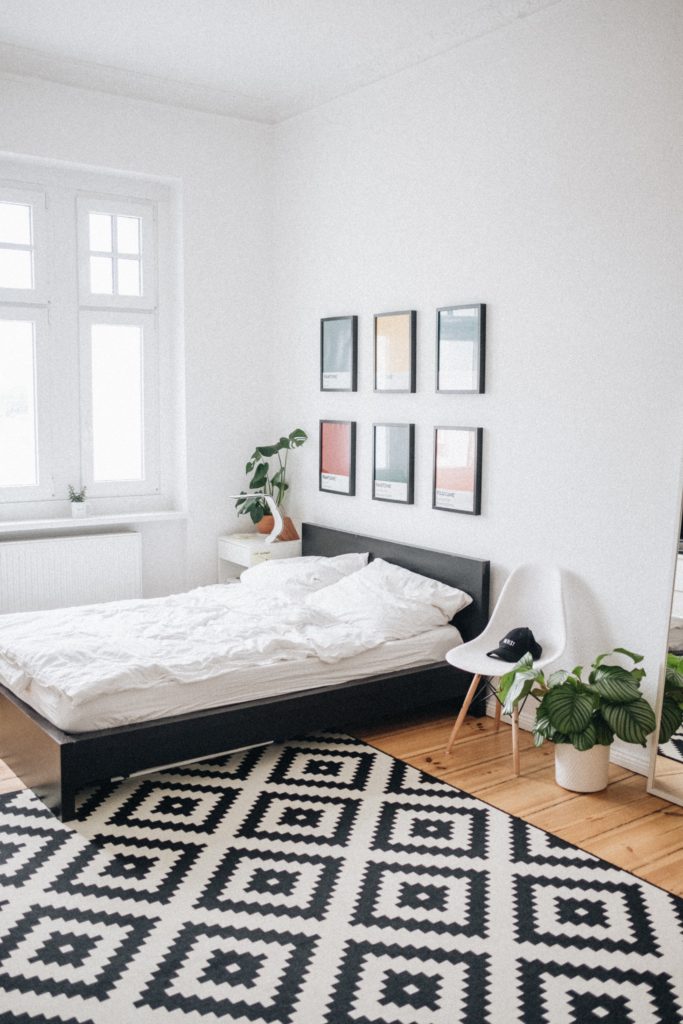

The Conversation (0)
Start a discussion, our content team tries our best to respond to comments. However replies should not be a substitute for medical advice from your doctor.*